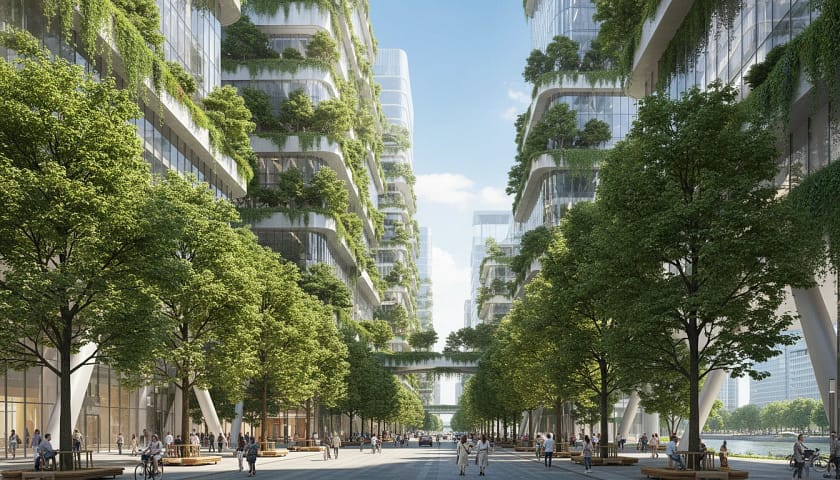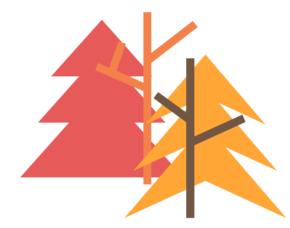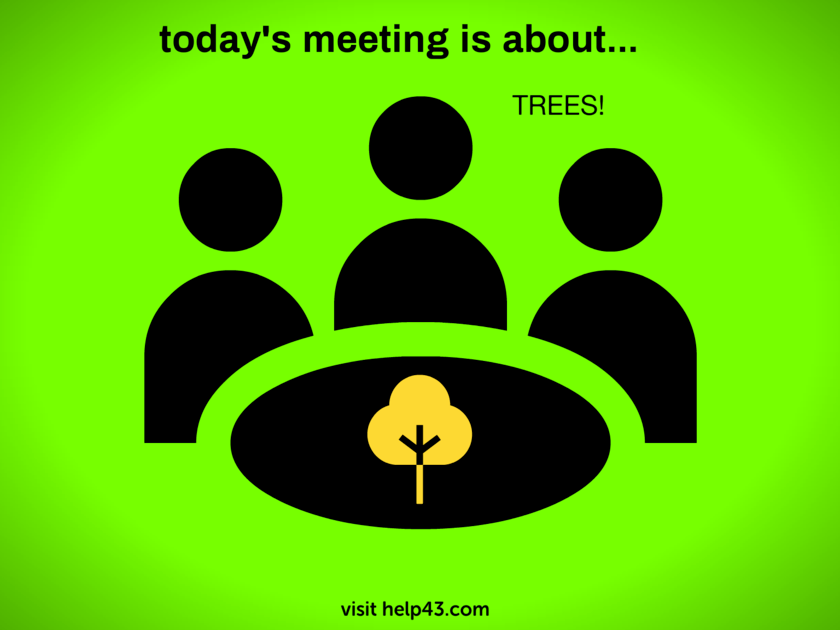Tree Planting Techniques For Urban Areas
Tree Planting Techniques For Urban Areas
Picture this: sleek modern buildings with thriving greenery seamlessly woven into the urban fabric. That’s what urban tree planting is all about. These green giants aren’t just pleasing to the eyes; they’re powerhouses that bring tangible benefits to our cities.
Urban trees don’t just chill under the sun looking pretty. They improve air quality by combating pollution, help reduce heat from sun-baked concrete, and even contribute to lowering energy costs by providing shade. Plus, they calm us down and create a sense of well-being in the hustle and bustle of city life.
With more people than ever living in urban areas, the demand for trees is skyrocketing. Statistics paint a stark picture – we need more trees in our cities to keep them vibrant and livable. Yet, it’s not just about planting more trees; it’s about planting wisely. Understanding the latest trends and benefits of urban greenery can spark inspiring transformations in how we design and live in urban spaces.
Assess Urban Landscape for Planting
When it comes to sprucing up urban environments, understanding the lay of the land is crucial. Not every patch of soil in the city is suitable for a new sapling to thrive. Some areas might look perfect but might not support healthy tree growth without a little TLC.
Take a close look at existing green spaces to pinpoint potential spots for planting. These aren’t just the obvious parks but can be roadside medians or the small pockets between sidewalks and streets. The goal is to integrate trees seamlessly into the existing cityscape without causing disruptions.
Local climate and soil conditions can be a tree’s best friend or worst enemy. Evaluating these elements ensures the species of trees you choose are the right fit for their new home. You’ll want to skip understanding them at your own risk because it can spell disaster for your green ambitions.
Working hand-in-hand with city planners not only enhances the integration of trees but can also help in overcoming challenges such as utility lines and infrastructure concerns. It’s about collaboration to create a harmonious environment that balances urban growth with natural beauty.
Select Suitable Tree Species
Not all trees are created equal, especially in the urban jungle. Picking the right species for city life is crucial to ensure that trees don’t just survive but thrive.
Start by thinking about how well different tree species adapt to local climates. Some trees love the heat, while others do best in cooler environments. It’s not just about temperature, though. Consider how much rain the city gets and whether your chosen species will need extra watering or thrive well on minimal moisture.
Native species often steal the show in urban settings. They’re already accustomed to local conditions, so they’re less likely to demand relentless maintenance. Non-native species can bring beauty and variety but may require more care to adjust to the new surroundings.
Growth patterns and maintenance are key factors you can’t afford to ignore. Some trees grow straight and tall, perfect for lining streets, while others might spread wider, offering sprawling canopies ideal for parks.
Each species has its own maintenance quirks. Some are prone to shedding leaves or fruit that could clutter sidewalks, and others might need regular pruning to keep them in shape. Balancing beauty with practicality ensures the trees you’ll plant won’t become a burden over time.
Understand Planting Techniques and Methods
Selecting the right tree species is only half the battle. How you plant them is the other half, and it can make all the difference. City settings bring unique challenges that need some smart planting approaches.
Let’s talk planting methods. Traditional pit planting remains a solid choice. You dig a hole deep and wide enough for the roots, place the sapling, then cover it with soil. But urban areas sometimes demand different strategies.
Container planting is another method gaining popularity. Trees grown in containers can be planted year-round, letting you bypass some seasonal restrictions. Plus, containers help protect the roots, giving younger trees a better chance of survival when they’re transplanted to their permanent homes.
Each method has its pluses and minuses. While pit planting gives roots room to spread naturally, it might not be feasible on busy streets. Container planting, though convenient, requires more upfront care to ensure trees adapt well when finally planted. You might even use a hybrid approach, mixing various techniques to suit specific needs.
Consider the special hurdles urban locations pose—limited space, hard concrete, and a bustling environment that never sleeps. Tailoring your techniques to these factors ensures the trees will grow strong and stand the test of urban life.
The aim is to enhance the city’s green infrastructure while ensuring that these trees fit naturally into their new environments. Understanding the ins and outs of different planting methods helps get the most out of each sapling planted right in the heart of the urban landscape.
Plan for Growth and Longevity
When it comes to urban trees, timing can make all the difference. Figuring out the best planting seasons can give these green additions a jumpstart on life. Trees planted at the right time grow stronger and require less maintenance down the line.
Spring and fall are generally prime times for planting because the weather is mostly mild, not too hot, not too cold. Trees get a chance to expand their roots before they have to deal with extreme weather. That said, understanding the specific timing for your city’s climate is key. Sometimes, local weather patterns may shift these ideal times.
Once your trees are in the ground, don’t just leave them to fend for themselves. Designing a detailed care plan is essential to nurture them through their early years and even beyond. Watering schedules, mulching to retain soil moisture, and routine pruning are just a few maintenance tasks needed to keep them healthy.
Pest control and disease management can’t be ignored either. Regular checks help spot early signs of trouble, allowing for swift action before any infestation or illness takes over. Integrated pest management practices can provide effective solutions without harming the environment, making them perfect for urban settings.
Giving urban trees the right start with a thoughtful growth plan doesn’t only improve their odds of survival but can significantly boost their life span. The focus should always be on sustainable practices that promote long-term tree health and vitality, creating greener, more resilient urban areas.
Navigate Urban Challenges and Solutions
City environments bring unique hurdles when it comes to allowing trees to thrive. Pollution, limited space, and constant urban activity can throw a wrench in even the best-laid plans.
Pollution is a harsh reality in cities, affecting air quality and soil health. Despite this, many tree species have a knack for filtering pollutants, actively improving urban air. Choosing trees known for their resilience against air and soil pollution can give them a fighting chance.
Space constraints can test your creativity. Small patches of land might not offer the vast expanses some trees need, but innovative planting solutions are up for the challenge. Consider narrow-growing canopy trees to line streets or look into vertical planting options like green walls.
Rooftop gardening is another standout solution for space issues. By turning flat roofs into green zones, you can add trees and other plants to areas that seemed impossible before. It doesn’t just green the city; it also insulates buildings, creating energy-efficient spaces.
Urban resources can also be harnessed. Collecting rainwater for watering trees can help balance the limits on natural resources, ensuring the saplings get the hydration they need without wasting city water. Plus, utilizing existing drainage systems can minimize erosion and soil compaction, ensuring healthier root development.
Getting past urban obstacles often means thinking outside the box. With some smart techniques and creative solutions, urban trees can become hardy, long-lasting fixtures in any city landscape.
Utilize Technology and Innovation in Urban Forestry
In the digital age, tech is a game-changer for urban forestry. Harnessing technology can make managing city trees way more efficient and effective.
Start with GIS technology, a tool that maps out city landscapes, helping not just with planning, but also monitoring tree health over time. This kind of data collection aids in making informed decisions, enabling city planners to see the broader picture of the urban tree ecosystem.
Smart technologies also come into play, like automated sensors that monitor soil moisture and tree health. These devices can send data straight to your phone, allowing for real-time monitoring and quick responses to any issues.
Community engagement apps are another innovative tool to boost public involvement. These apps can create virtual networks where city dwellers report issues, suggest locations for new plantings, or even adopt and care for trees in their neighborhood.
Using drones for tree planting is starting to catch on too. They make it easier to plant in hard-to-reach or vast urban areas, reducing the need for heavy machinery and minimizing environmental impact.
Embracing these technologies means a shift towards smarter, more sustainable urban forestry practices that not only enhance efficiency but also align with broader environmental goals.
Engage the Community in Urban Tree Planting
People power is at the heart of successful urban tree planting. Getting communities on board transforms tree planting from a task into a shared mission, fostering a sense of ownership and pride.
Organizing community events is a stellar way to start. Tree planting days not only green up the area but also bring neighbors together. These events make it easy for residents to lend a hand in a fun, rewarding way.
Education is a powerful tool, too. Informing people about how trees improve everything from air quality to mental health empowers them to take action. Workshops, informational pamphlets, and online resources can offer valuable knowledge on tree care and its lasting benefits.
Building partnerships with local schools, nonprofits, and NGOs takes it a step further. Schools can incorporate tree planting into science programs, teaching students firsthand about environmental stewardship. NGOs and nonprofits can provide funding, expertise, or additional hands when needed.
Sustained community involvement doesn’t just boost planting efforts but also plays a key role in ongoing tree maintenance. When people are invested, they’re more likely to help with watering, monitoring tree health, and spreading the word about tree care, ensuring those urban trees blossom and grow for years to come.

Future Prospects and Conclusion
Urban tree planting is more than just a trend; it’s paving the way for sustainable city living. As cities expand, integrating more greenery becomes not just a perk but a necessity.
Long-term, increasing urban tree cover can offer profound environmental, social, and economic benefits. Trees have proven to enhance property values, reduce urban heat, and provide public health benefits. These are not just optimistic aspirations but achievable outcomes with concerted effort.
Policy shifts and thoughtful urban planning will be vital. More cities are recognizing the need for comprehensive green infrastructure policies that prioritize tree planting and maintenance. Public planners and policymakers are key allies in driving this movement forward.
Individual and collective actions also matter hugely. From participating in community events to advocating for greener city policies, every bit of effort adds up.
The road to greener cities is one that we travel together. Making urban areas lush and livable isn’t just a goal for tomorrow—it’s something we can all work towards today, ensuring a greener, healthier future for generations to come.
Thank you for likes, shares and comments! 🌳🌴🌲🌵
made with help of ChatGPT LM’s and Dalle
Invest in your future
Take time to learn
Embark on your journey in affiliate marketing and website creation alongside an incredible community and myself. Invest in your future by dedicating time to learn and earn. Take all the time you need to master the basics before aiming higher. Give it a try and sign up for free. You won't regret it! Discover the possibilities for yourself...


